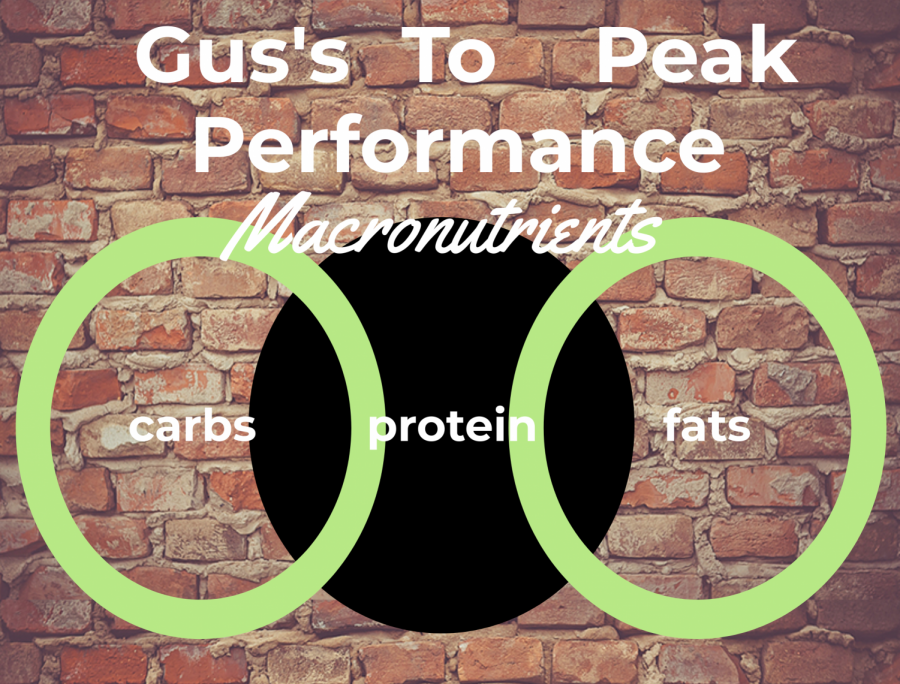Macronutrients
Last week on Gus’ Guide to Peak Performance we discussed micronutrients. This week I will be discussing the topic of macronutrients.
“Macronutrients are the nutritive components of food that the body needs for energy and to maintain the body’s structure and systems,” says renowned dietitian Lindsey Wohlford. Macronutrients are split into three separate groups: carbohydrates, proteins and fats. Macronutrients are the basis of calories that a person consumes in a day. Many apps and websites help people track their calories and macronutrients in a simple and effective way. One of the most commonly used apps is myfitnesspal. These are great tools for people who are very serious about weight loss or weight gain.
Protein is a crucial macronutrient in both muscle gain and retention. Each gram of protein has 4 calories and it is commonly said that a person should consume anywhere between .5-1.5 times their body weight in grams of protein and protein should account from about 20-30% of someone’s caloric intake. Of course this all depends on what the person is trying to accomplish. According to webMD, when protein accounts for more than 30% in a person’s caloric intake problems can be caused. These problems are the possibility of a toxic build up of ketones which can thrust your kidneys into overdrive and ultimately prohibit one’s ability to gain muscle. Some good options for intaking lean protein are chicken, fish, Greek yogurt, lean beef, or whey protein available in many forms.
Carbohydrates are the main source of energy in the body. Each gram of carbohydrate has 4 calories and they should make up the majority of a person’s calorie intake. They occur in plant foods (wheat, rye, etc) and dairy products and consist of sugars, starches, and fibers. Carbohydrates of all forms are turned into glucose and raise blood sugar. The only difference is the speed they are broken down in the body. Although carbs commonly get a bad rap for causing weight gain whole grains and fruits are great foods when consumed in moderation. They are split into two different groups simple, and complex which goes back into the speed of them being broken down into glucose. Some good sources of simple carbs are fruits and dairy whereas good sources of complex carbs are bread, rice, and potatoes.
The final group is fats. According to Harvard studies, “Fat helps give your body energy, protects your organs, supports cell growth, keeps cholesterol and blood pressure under control, and helps your body absorb vital nutrients.” There are 9 calories per gram of fat making them the most calorie dense macro. There are two types of fats seen in US foods saturated and unsaturated. You may have heard of another type called trans fats but they have been basically cut out from US food production by the FDA. Saturated fats are the quote on quote bad fats that should be avoided most of the time. These come from foods such beef, pork, and highly processed foods. Unsaturated fats are the healthier fats and can be found in avocados, nuts, and plant oils. The reason saturated fats are considered bad is because they raise LDL cholesterol which is bad for the body. Whereas unsaturated fats raise HDL cholesterol which is good for the body. Vasanti Malik, a Harvard research scientist says, “You want to have a high HDL-to-LDL ratio, and unsaturated fats can help with this.”

